ZOO (Day 10 - part 7)
The African penguins exhibit (with a 150,000-gallon saltwater tank) was designed to mimic the giant granite boulders that are found on Boulders Beach in South Africa, a place where these birds live.


African penguins (widely known as Jackass Penguins for their donkey-like sounds) live on the rocky coastal shores of South Africa. The bare patch above each eye helps them cope with high temperatures by cooling off the blood as it circulates here. These patches get pinker as a penguin warms up.


Their chest markings are as unique as a human's fingerprints. Each one had a little wing name tag!


An incredible aquarium!
Sun Bear Forest opened in 1989 and exhibits a wide variety of monkeys.


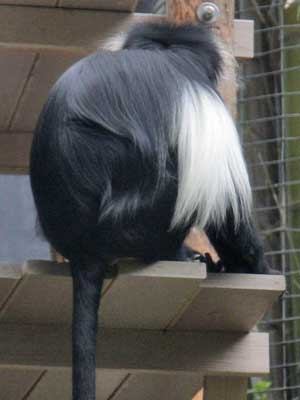

The Angolan colubus is found in dense forests in Africa. They forage on leaves, flowers and fruit in highly social groups. ... François' langur (Tonkin leaf monkey or white side-burned black langur) was named after Auguste François (1857-1935). It's believed there are less than 500 individuals in the wild in Vietnam and perhaps 1,500 in China.


(left) The black crested mangabey is only found in Democratic Republic of the Congo and is threatened by habitat loss due to deforestation for agricultural land.


The exhibit was extremely lush!
Absolutely Apes opened in 2003 (a major renovation from the 1982 exhibit). It houses Karen (born 1992), Indah (1987), her daughter Aisha (2014) and son Kaja (2022). In 1994, Karen was the first orangutan to have open heart surgery to repair a large hole in her heart.


Sumatran orangutans are critically endangered and found only on the Indonesian island of Sumatra. These solitary animals are capable of just sits in the forest canopy for hours. The word comes from Malay, with orang meaning person and hutan meaning forest... or person of the forest.

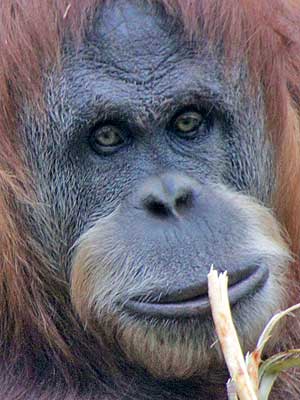
The Scripps Aviary was built in 1992 and houses many colorful African birds.

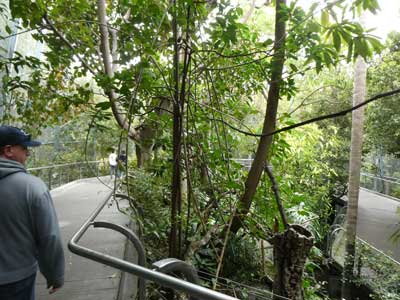


Tambourine doves ... the purple glossy starling
Tiger Trail opened in 1988 (replacing an older exhibit from 1973) and houses the critically endangered Malayan subspecies. There are less than 200 wild tigers remaining on the Malay Peninsula, with a continuing downward trend.


A big roll begins...
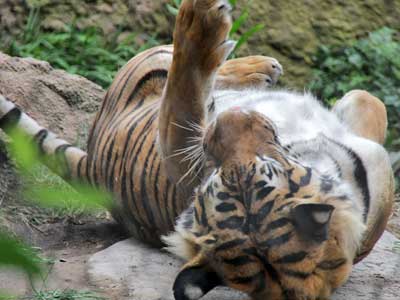

... halfway there ...

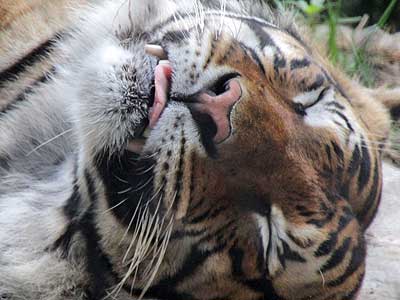
... and done. I think he wins the silly cat contest!

Wolf's mona monkey (also Wolf's guenon) lives in the lowland rainforest and swamp forests of central Africa. In 2015, two of them found a way out of their enclosure. They were caught a short time later but were later commented to be "cheeky fellows".

The lesser spot-nosed monkey (or lesser white-nosed guenon) lives in diverse environments in west Africa. What a long tail!


Grooming
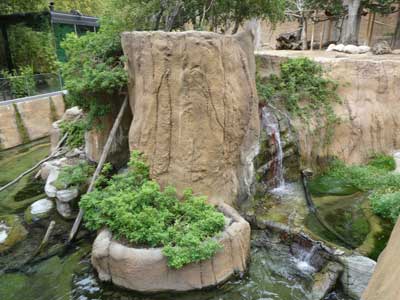

The African or Cape clawless otter inhabits permanent water bodies throughout most of sub-Saharan Africa.
Gorilla Tropics opened in 1991.


A heat lamp keeps them nestled up against the viewing window.
In spite of being the largest living primates, gorillas are herbivores. The ground-dwelling great apes live in troops in the tropical forests of equatorial Africa.
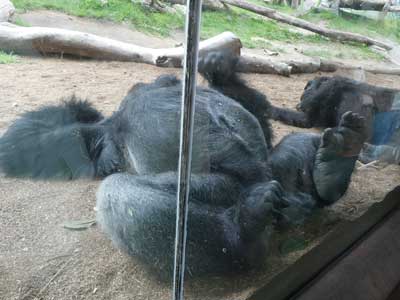
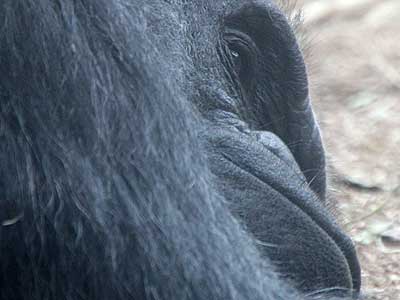
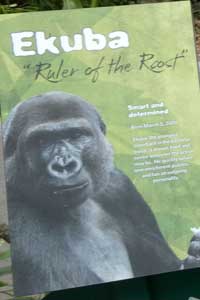


The bachelor troop with Ekuba (born 2006), Mandazzi (2022) and Maka (1995)


No matter what you call it... mountain lion, cougar, puma and even panther... this is a powerful cat. It can hunt prey two to three times its own size and has been known to even eat porcupines, quills and all. They range from Canada all the way down to the tip of South America. They are extremely adaptable, living in high mountains, deserts, coastal areas and even cities.


Three cubs were brought to the zoo and safari park after they were found orphaned in the wild at 6 weeks of age, too young to care for themselves.


The giant anteater from Central and South America feeds primarily on ants and termites, using its sturdy front claws to dig them up and its long, sticky tongue to collect them. It can walk on its front knuckles so that it doesn't have to scrape its front claws on the ground. They have poor eyesight but a good sense of smell.

Wait, what strange and exotic creature are you?
We took the Skyfari back towards the zoo entrance where we grabbed some lunch.






return • continue

